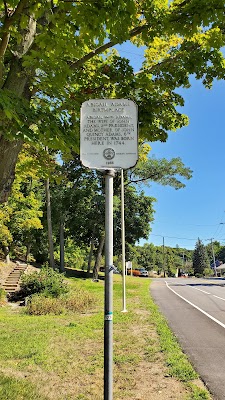Rabaul Historical Society Museum (Rabaul Historical Society Museum)
Overview
Located in the picturesque town of Rabaul in East New Britain, Papua New Guinea, the Rabaul Historical Society Museum is a hidden gem brimming with rich history and cultural significance. This museum offers a captivating glimpse into the past, allowing foreign tourists to explore the extraordinary heritage of this fascinating region.
Rabaul itself is renowned for its dramatic landscape, dominated by active volcanoes and an impressive harbor. Yet, it is the vivid tapestry of human history—shaped by colonialism, war, and natural phenomena—that the Rabaul Historical Society Museum aims to preserve and showcase. Established by a dedicated group of historians and local enthusiasts, the museum has become an indispensable repository of artifacts and memorabilia that narrate the story of Rabaul and its surrounding areas.
A visit to the museum begins with a welcoming introduction to the region’s pre-colonial past. Exhibits highlight the traditional lifestyles and cultures of the Tolai people, the indigenous inhabitants of East New Britain. Here, you’ll find intricately carved masks, tools, and ceremonial artifacts that underscore the rich cultural heritage that existed long before European contact. This section serves as a poignant reminder of the depth and diversity of Papua New Guinea’s indigenous cultures.
As you move forward in time, the museum delves into the colonial era, exploring the period of German and British control. Rabaul was originally established as a German colonial capital in the late 19th century before being transferred to Australian administration after World War I. Artifacts from this era include colonial documents, personal effects of settler families, and photographs that capture Rabaul’s transformation from a lush tropical outpost to a bustling colonial hub.
One of the most compelling sections of the museum is its World War II exhibit. Rabaul played a significant role during the war, serving as a major Japanese military base. The museum houses an extensive collection of wartime relics—such as weapons, uniforms, maps, and personal letters from soldiers—that bring this turbulent period to life. The haunting stories told through these objects vividly illustrate the war's profound impact on Rabaul and its residents.
Additionally, the museum provides insights into the volcanic activity that has dramatically shaped Rabaul’s landscape and history. The devastating eruptions, particularly those in 1937 and 1994, are poignantly displayed through a combination of photography, seismographic records, and firsthand accounts. The courage and resilience of the local population in the face of such natural disasters are compellingly captured, showcasing both the formidable power of nature and the indomitable human spirit.
A lesser-known yet equally intriguing aspect of the museum is its coverage of the post-war and independence era. This section captures the socio-economic developments and cultural renaissance that have unfolded in Papua New Guinea since gaining independence in 1975. Displays featuring local arts, crafts, and contemporary narratives highlight the ongoing evolution of Rabaul and East New Britain within the broader context of modern Papua New Guinea.
Beyond the permanent exhibits, the Rabaul Historical Society Museum also hosts temporary exhibitions, lectures, and educational programs. These initiatives aim to deepen understanding and generate interest in the region's history. Visitors are encouraged to check the museum’s schedule, as special events or displays may coincide with their visit.
For those seeking a more interactive experience, guided tours are available. Led by knowledgeable locals, these tours provide additional context and personal anecdotes that enhance the appreciation of the exhibits. The tour guides often have familial ties to the events showcased, adding a poignant and personal charm to the narratives shared.
Finally, the museum features a quaint little gift shop where visitors can purchase books, replicas, and artisanal crafts that make for meaningful souvenirs. Every purchase supports the museum’s ongoing efforts to preserve and promote the history of Rabaul.
In conclusion, the Rabaul Historical Society Museum is more than just a collection of artifacts; it serves as a gateway to understanding the complex and layered history of East New Britain and its people. Whether you are a history buff, a culture enthusiast, or someone interested in the dramatic interplay between humans and nature, the museum offers something for everyone. A visit here is not only educational but also deeply enriching, leaving you with a lasting connection to the remarkable story of Rabaul. Make sure to allocate ample time to fully immerse yourself in this treasure trove of history on your next trip to Papua New Guinea.







